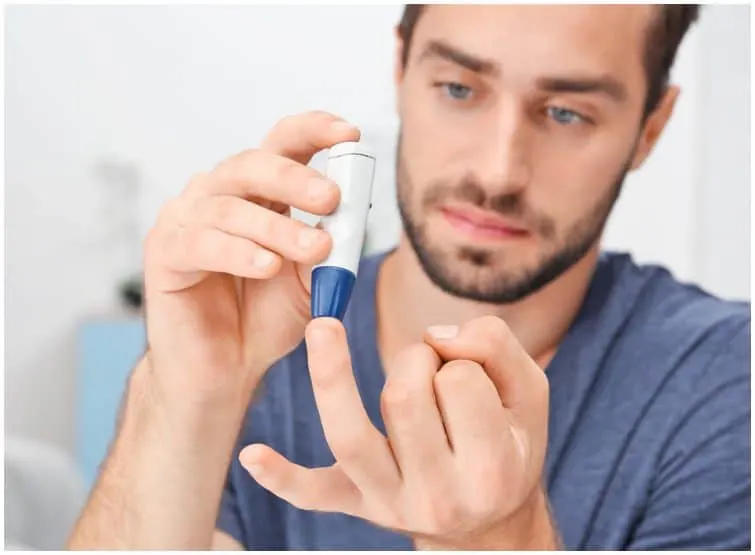Tinactin vs Lotrimin – here are the details:
Introduction
Ringworm is a common infection that is very contagious and can affect the scalp, body, feet, face, or nails.
About 20 percent of people will have this infection at some stage of their lives.
It is caused by fungi that normally live on the hair, skin, and nails called dermatophytes.
Symptoms
Common symptoms of ringworm include:
- sharply defined edges, occasionally darker around the edge;
- scaly, crusted rash;
- raised, red patches which can blister or ooze;
- an itchy and unpleasant sensation on your skin.
Note – you might not know you have ringworm until the rashes appear since it has an incubation period of up to 2 weeks.
Jock Itch
It is a common, itchy rash of the groin that is associated with a pink or red rash involving the genitals and groin folds.
The rash is also caused by dermatophytes.
Symptoms
Symptoms of jock itch include:
- flaking, cracking, or peeling skin;
- a red, scaly, circular rash with raised edges;
- burning and itching.
Treatment
Both infections can be treated effectively with most antifungal medications.
Here is a comparison between Tinactin and Lotrimin, two topical antifungals:
Tinactin
It is an antifungal medication that fights infections caused by fungus and whose main ingredient is tolnaftate. It is used to treat:
- infections of the scalp, palms, nails, and soles of the feet;
- ringworm (tinea corporis);
- jock itch (tinea cruris);
- athlete’s foot (tinea pedis).
Lotrimin
Its main ingredient is clotrimazole, a medication that belongs to a group of drugs called antifungals.
It is commonly used for the treatment of:
- oral thrush;
- athlete’s foot (tinea pedis);
- ringworm (tinea corporis);
- jock itch (tinea cruris).
Mechanism of Action
Tinactin works by suppressing a vital fungal enzyme that is responsible for maintaining the integrity of the fungal cell’s membrane.
Lotrimin works by inhibiting the growth of infection-causing yeast.
Side Effects
Possible side effects of Tinactin include:
- stinging at the application site;
- irritation at the application site;
- severe itching, peeling, dryness, redness, or blistering (in very rare cases).
Possible side effects of Lotrimin include:
- itching, swelling, redness, irritation, burning at the site of application;
- fever;
- swelling of the skin.
Dosage
Tinactin
The cream must be applied to the affected skin area two times per day (in the morning and at night).
Notes – do not use coverings (dressings, bandages, make-up) unless told to do so by your healthcare provider.
Before the application of this antifungal cream, the affected skin area must be washed and dried.
Lotrimin
The antifungal cream must be applied to the affected skin area in the morning and evening.
Notes – wash your hands before and after use.
However, do not wash your hands after use if this medicine is applied to the skin of your hand.
Warnings & Precautions
Tinactin
Before using this antifungal cream, tell your doctor:
- if you have scalp or nail infections;
- if you are allergic to any drugs, foods, or other substances. Tell your healthcare provider about the allergy and what signs you had, such as – rash, itching, hives, wheezing, cough, shortness of breath, and swelling of the lips, tongue, face, or throat.
- if you have an allergy to any ingredients of this medication.
Note – this medication is not recommended for the treatment of infection of the nail beds or deeper skin infections.
Lotrimin
Before using this antifungal cream, tell your doctor if you have or have ever had:
- diabetes mellitus;
- a history of alcohol abuse;
- problems with your immune system;
- liver disease (examples include cirrhosis and fatty liver disease).
Note – do not take this medicine by mouth. It is for use only on the skin.
Drug Interactions
There are no known drug interactions regarding these antifungal creams.
ALSO READ: Maalox vs Mylanta
Alcohol
There are no known interactions between alcohol intake and the use of these antifungal creams.
ALSO READ: Mupirocin vs Neosporin – Comparison
Is It Safe During Pregnancy or Breastfeeding?
Tell your doctor if you are pregnant since there are no studies regarding the safe use of these antifungal creams while being pregnant.
It is not known whether these antifungals pass into breast milk. Talk to your healthcare provider prior to use if you are breastfeeding a baby.
ALSO READ: Singulair vs Zyrtec – Which Is The Best Allergy Medicine?
Tinactin vs Lotrimin – Differences
Tinactin (tolnaftate) stops the growth of fungi which cause skin infections, such as – jock itch, athlete’s foot, and ringworm.
Lotrimin (clotrimazole) is an antifungal medication that works by disrupting the cell membrane and is part of the azole class of medications.
This anti-fungal agent works effectively for the treatment of ringworm, jock itch, and athlete’s foot.
According to a review of studies, tolnaftate is more effective than azoles for fungal skin infections of the foot.
ALSO READ: Ofloxacin vs Ciprodex For Ear Infection
Preventing Jock Itch & Ringworm
Good prevention methods include:
- change your towels frequently;
- wear sandals in locker rooms or around a pool;
- change your underwear daily;
- do not share towels, hairbrushes, clothing, or other personal items with others;
- avoid tight synthetic clothing;
- wear loose-fitting clothing;
- wash your hands frequently with running water, soap and plenty of friction;
- keep your groin area clean and dry, particularly after exercising, washing, or on a hot day.
Sources https://www.ncbi.nlm.nih.gov/pmc/articles/PMC1936446/ https://www.aafp.org/afp/2003/0615/p2517.html https://jamanetwork.com/journals/jama/article-abstract/1165889 https://www.fda.gov/downloads/Drugs/GuidanceComplianceRegulatoryInfor
